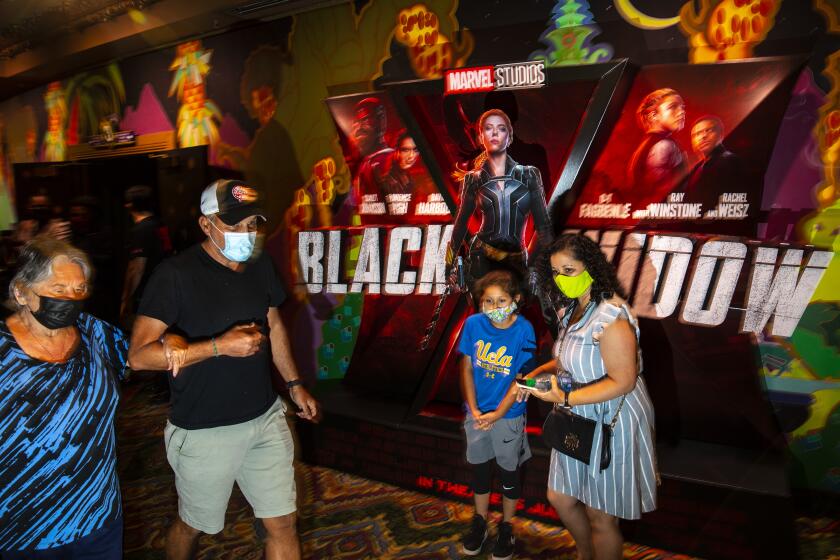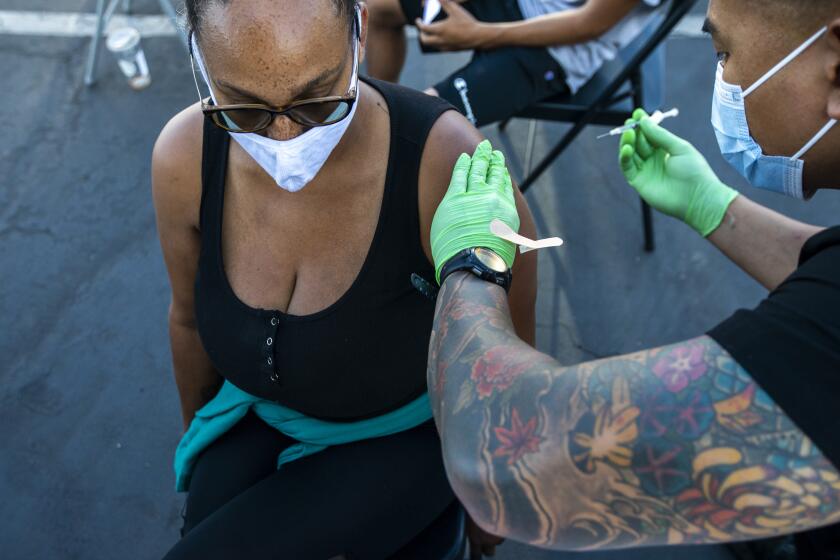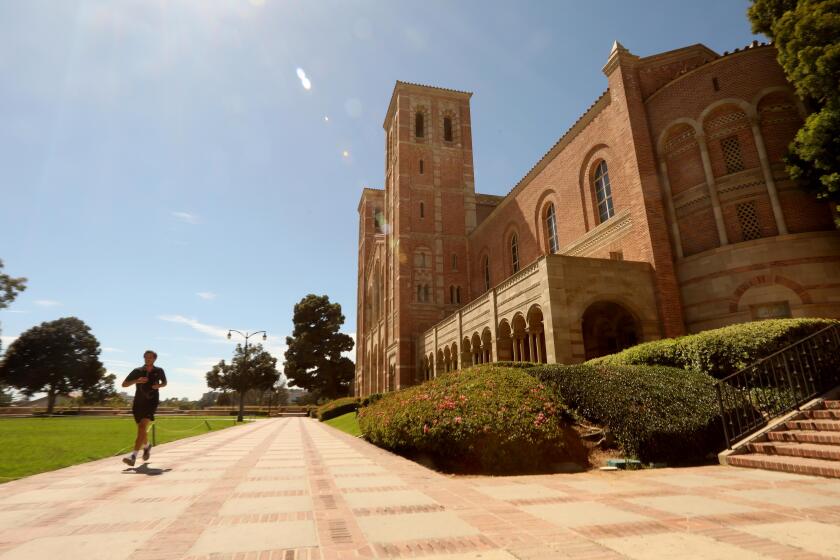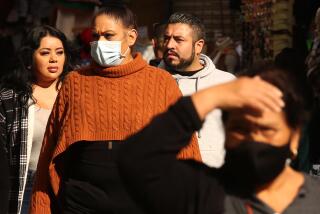What L.A. County’s new indoor mask rules mean for dining, shopping and more
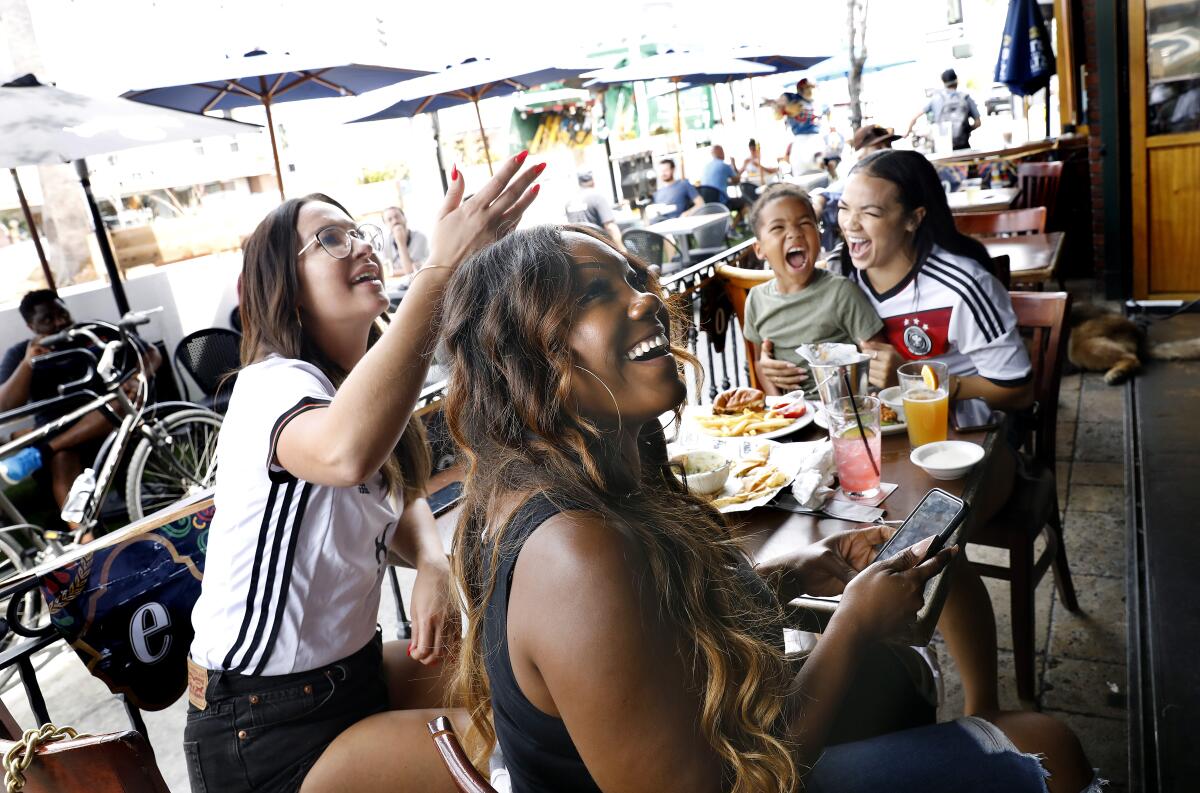
- Share via
With coronavirus cases rising significantly among the unvaccinated, Los Angeles County has restored a mask mandate for in indoor public spaces.
L.A. County becomes the first health agency in California to again require mask wearing inside public settings — a recognition of the sharp jump in cases over the last week.
Here are the basic details:
Faced with a rise in coronavirus cases, L.A. County will again require residents to mask up in indoor public spaces — regardless of vaccination status.
Does this mandate cover everyone?
Yes, masks will soon be required in public indoor spaces regardless of whether you are vaccinated.
Officials stress that vaccines offer strong protection against COVID-19 infections, even the aggressive Delta variant.
The majority of new cases are among those who have not been inoculated. Between Dec. 7 and June 7, the unvaccinated have accounted for 99.6% of L.A. County’s coronavirus cases, 98.7% of COVID-19 hospitalizations and 99.8% of deaths.
But officials suspect that unvaccinated people have stopped wearing masks despite a longstanding order that they continue to do so in many places.
As a result, officials hope the new order will cause everyone to wear masks indoors — which they hope will slow the spread of the virus.
Tuesday marked the fifth straight day that the number of new coronavirus infections exceeded 1,000.
When does it take effect?
The new health order goes into effect at 11:59 p.m. Saturday everywhere in Los Angeles County, except for Long Beach and Pasadena, which have their own health departments.
Both cities have already recommend that everyone, regardless of vaccination status, wear masks in indoor public settings. Sacramento and Yolo counties have also made the same recommendation.
What is covered?
Public indoor spaces will be affected, such as theaters, stores, public venues and shopping malls. The mask rules will essentially revert back to where they were before the county lifted them before the June 15 reopening. At that time, some retailers dropped their mask rules.
What about indoor dining?
The order will continue to allow operations of indoor restaurant dining, but it requires people to keep their masks on while they order and while they’re waiting for food.
Does the order reduce business capacity?
No. The order does not require a reduction in business capacity or a return to mandatory physical distancing.
The UC requirement underscores the uncertainty over campus health protocols as the Delta variant spreads.
Why is L.A. County acting?
L.A. County has seen a steep increase in coronavirus cases of late. During the weeklong period that ended Wednesday, the county reported an average of 1,077 new cases each day — a 261% hike from two weeks prior, according to data compiled by The Times. On Thursday, officials reported 1,537 additional cases.
An uptick in cases, combined with the presence of the highly infectious Delta variant of the coronavirus, was behind L.A. County’s urging in late June that all residents wear masks in public indoor spaces. But conditions have worsened since then.
In recent days, the U.S. Centers for Disease Control and Prevention classified L.A. County as having “substantial” community transmission of the coronavirus, the second-worst level in a four-category scale.
Where do we stand with vaccinations?
Times data show that 51.8% of all Californians are fully vaccinated to date, though wide regional gaps persist.
In San Diego County, it’s 57%; in Orange County, 54.7%; and in L.A. County, 52.2%.
The rates are much lower in Riverside County (42.1%) and San Bernardino County (39.2%).
But all those counties, as well as the state as a whole, remain short of the vaccine coverage believed necessary to achieve “herd immunity” against the coronavirus — when the sustained transmission of the virus is interrupted. Estimates for that threshold generally range from 70% to 85%.
And given how significantly the vaccination pace has slowed, some of the state’s most populous counties may take months to reach that level — if they ever do.
By contrast, the San Francisco Bay Area has done much better with vaccinations. San Francisco has reported 68.9% of its residents fully vaccinated; Santa Clara County, Northern California’s most populous, has 67.4% of its population fully vaccinated. Those counties so far have reported relatively stable hospitalization rates, unlike Southern California, where hospitalizations are up.
Will it work?
Time will tell.
L.A. County health officer Dr. Muntu Davis characterized universal indoor masking as one of the more effective ways to curb the spread of the virus without interrupting operations at businesses and venues — most of which were able a month ago to shed coronavirus-related restrictions.
But, he acknowledged, further intervention could be necessary if conditions deteriorate.
“Anything is on the table if things continue to get worse, which is why we want to take action now,” he said. “We’re not where we need to be for the millions at risk of infection here in Los Angeles County, and waiting to do something will be too late given what we’re seeing now,”
More to Read
Sign up for Essential California
The most important California stories and recommendations in your inbox every morning.
You may occasionally receive promotional content from the Los Angeles Times.
